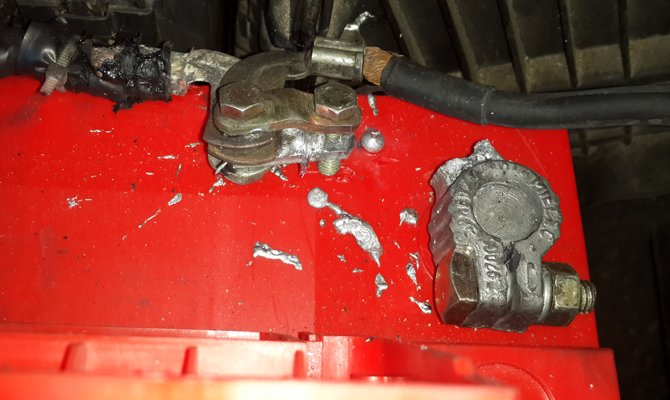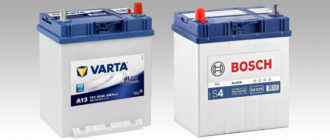During the operation of the vehicle, situations may arise when it is necessary to remove the battery terminals. Many motorists consider such a procedure a simple technical operation, in which there is no need to follow certain rules. Such a belief is erroneous.
Content
Why do I have to remove the terminals from the battery
The battery must be disconnected from the vehicle electrical system in the following cases:
- battery replacement in the process of loss of consumer characteristics;
- welding work on the body;
- dismantling the battery for access to the engine, body, suspension, brake system, gearbox and other vehicle components;
- electrical work;
- replacement of electrical parts of a vehicle;
- dismantling the battery during long-term storage;
- performing battery maintenance;
- stationary battery charging.
Also, the removal of one of the battery terminals is necessary to clear errors on the vehicle systems (engine control unit, airbags, ABS and others). Usually this requires a temporary disconnection of the battery from the vehicle’s on-board network for more than 15 minutes.
Theoretically, the process of disconnecting the battery from the electrical equipment of the car can occur in any sequence. However, in the event of the initial removal of the positive connector, abnormal situations may occur when instruments come into contact with metal elements of the body and engine. The consequences of such a circuit can be severe.
How to remove the terminals
When disconnecting the battery, the following sequence must be followed:
- Release access to battery. If necessary, remove plastic protection, cover.
- Release clamp on negative connector.
- Remove the connector from the negative terminal. In this case, it is necessary to arrange the negative wire with the connector so that it does not hang out, does not interfere with further actions, and cannot return to its usual place.
- Remove the positive connector, observing the requirements specified in the previous paragraphs.
- After these operations, you can proceed to dismantle the battery.
During the execution of the listed works, it is necessary to use regular tools. You cannot, for example, use pliers to loosen the nuts and bolts.
How to determine the negative terminal
The negative terminal on the battery can be determined in three ways:
- By marking on the battery. Most batteries on the case have a raised image in the form of a “-“ sign. It can be enclosed in a circle. The relief structure facilitates identification in the dark.
- By thickness. The diameter of the positive terminal of the battery is slightly larger than the negative. 19.5 mm in relation to 17.9 mm in the European version, 12.7 mm to 11.1 mm in the Asian version. Thus, the negative will be thinner than the positive.
- By the color of the wires that connect the battery to the car’s electrical equipment. Usually, red conductors are connected to the positive terminal. To the negative is a thick black wire. There are auto models where both conductors are black insulated. In this case, you can track the path of the conductor. From the negative terminal, one of the conductors must follow to the car body (ground).
What will result in a sequence error
If you disconnect the positive terminal when disconnecting the battery, you can touch the metal parts of the body or engine with a wrench or other tool while loosening the clamp. A powerful short circuit will occur, which can lead to:
- damage to the organs of vision by abundant sparking, electrolyte;
- thermal and chemical burns (in case of loss of battery tightness, case explosion);
- loss of battery performance;
- violation of the electrical equipment of the car;
- ignition
- failure of car systems;
- mechanical thermal destruction of short circuits.
Given the grave consequences that may arise, you must strictly follow the rules for removing the terminals of the car battery.







